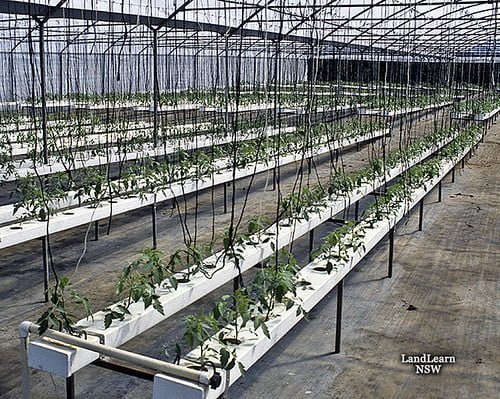Strategies for Protecting Plants and Preparing for Extreme Weather Conditions
You'll learn essential techniques for safeguarding your plants from extreme weather in this article. Discover how to understand your local climate, select resilient plant varieties, implement proper watering methods, create windbreaks and barriers, regulate temperatures with mulching, use season extenders, and adjust for extreme conditions. Be prepared for sudden weather events and develop a contingency plan to protect your plants effectively.
Understanding Your Local Climate
Understand your local climate to effectively protect your plants and prepare for extreme weather conditions. Begin by researching the average temperature range, rainfall, and any seasonal patterns in your area. This information will help you choose plants that are best suited for your specific climate, reducing the risk of damage during extreme weather. For example, if you live in an area prone to drought, selecting drought-resistant plants can ensure their survival during prolonged dry spells. Conversely, if heavy rainfall is common, you may need to consider plants that can tolerate waterlogged soil. By understanding your local climate, you can make informed decisions about plant selection, watering schedules, and protective measures, ultimately promoting the health and resilience of your garden.
Selecting Resilient Plant Varieties
You should prioritize selecting resilient plant varieties that are well-suited to your local climate and can withstand extreme weather conditions. Look for plants that have a track record of thriving in your specific region, taking into account factors such as temperature fluctuations, precipitation levels, and soil type. Seek out varieties that exhibit resilience to common local stressors, such as drought, high winds, or excessive heat. Consider talking to local gardening experts or visiting botanical gardens in your area to gather insights on which plant varieties have shown the most resilience. Additionally, take note of any potential pests or diseases prevalent in your region and choose plant varieties that have natural defenses against these threats. By selecting resilient plant varieties tailored to your local climate, you can better prepare your garden to withstand extreme weather conditions.
Implementing Proper Watering Techniques
Prioritize implementing proper watering techniques to ensure your plants receive adequate moisture and can withstand extreme weather conditions. For most plants, it's best to water deeply and less frequently to encourage deep root growth. Early morning watering is ideal as it allows foliage to dry during the day, reducing the risk of fungal diseases. When watering, aim at the base of the plants to minimize water loss through evaporation. Consider investing in soaker hoses or drip irrigation systems to deliver water directly to the roots with minimal waste. Mulching around plants can also help retain soil moisture. Monitor your plants and adjust watering schedules based on weather patterns and individual plant needs. By following these watering techniques, you can better prepare your plants to thrive in various weather conditions.
Creating Windbreaks and Barriers
To further protect your plants and enhance their resilience in extreme weather conditions, consider creating windbreaks and barriers to shield them from damaging winds and harsh elements. Planting tall, dense shrubs or trees strategically can act as natural windbreaks, reducing the force of winds and preventing damage to your plants. Additionally, installing fences or barriers made of materials like wood or metal can effectively block strong gusts and provide a protective barrier. When creating windbreaks, ensure they are positioned perpendicular to the prevailing winds for maximum effectiveness. It's also important to regularly maintain and trim the windbreak vegetation to keep it strong and dense. By implementing these measures, you can significantly mitigate the impact of extreme weather conditions on your plants, promoting their health and longevity.
Mulching for Temperature Regulation
Implementing mulching around your plants is key for temperature regulation and can complement the windbreaks and barriers you've already established. Mulching helps to moderate soil temperature, keeping it cooler in hot weather and warmer during cold spells. When extreme temperatures hit, a layer of mulch acts as insulation, preventing rapid temperature fluctuations that can stress plants. Organic mulches like straw, wood chips, or shredded leaves are excellent choices as they break down over time, enriching the soil and enhancing its ability to retain moisture and heat. In contrast, inorganic mulches such as rocks or landscape fabric are effective at reflecting sunlight and reducing moisture loss. Proper mulching not only aids in temperature regulation but also contributes to overall plant health and resilience, making it a crucial component of your plant protection strategy.
Constructing Protective Structures
Construct protective structures around your plants to shield them from extreme weather conditions and minimize the impact of harsh elements. Use materials like PVC pipes, wood, or metal to create frames for supporting plastic or shade cloth covers. These structures can provide protection from heavy rain, hail, strong winds, or intense sunlight. Ensure that the covers are securely fastened to the frames to prevent them from being blown away during storms. Additionally, consider constructing cold frames or hoop houses to safeguard plants from frost and freezing temperatures. These can be particularly useful for extending the growing season in colder climates. Properly constructed protective structures can make a significant difference in the health and resilience of your plants, allowing them to thrive even in challenging weather conditions.
Utilizing Season Extenders
Extend your growing season and protect your plants from extreme weather by utilizing season extenders. Consider using row covers, cold frames, and hoop houses to shield your plants from frost and wind. Row covers are lightweight, breathable fabrics that can be draped over plants, while cold frames are bottomless boxes with transparent tops that capture and retain heat. Hoop houses are simple, inexpensive structures made of arched metal or PVC pipes covered with plastic sheeting. These season extenders help regulate temperature, retain moisture, and protect your plants from harsh weather conditions. When using season extenders, ensure proper ventilation to prevent excessive heat buildup during sunny days. Additionally, monitor the weather forecast and adjust the coverings as needed to optimize growing conditions for your plants. With these tools, you can effectively prolong your growing season and safeguard your plants from extreme weather.
Monitoring and Adjusting for Extreme Conditions
Monitor weather forecasts regularly and adjust protective coverings as necessary to mitigate the impact of extreme conditions on your plants. When extreme weather is predicted, stay vigilant and be prepared to take action. If frost is expected, ensure that your plant coverings are secure and that the plants are well-watered, as moist soil retains heat better. In case of strong winds, consider adding additional support to your plant stakes or trellises to prevent damage. During periods of intense heat, provide shade using shade cloth or move potted plants to a cooler area. Keep an eye on the weather throughout the day and be ready to make adjustments as needed. By staying proactive and responsive, you can help your plants withstand the challenges of extreme weather.
Emergency Measures for Sudden Weather Events
When sudden weather events occur, quickly cover your plants with protective materials to minimize damage. Use lightweight materials like blankets, tarps, or even old bedsheets to shield plants from hail, heavy rain, or strong winds. If possible, create temporary windbreaks using stakes and fabric to provide extra protection. For potted plants, move them to a sheltered area such as a garage or under a sturdy overhang. Be sure to secure any loose items in your garden that could become projectiles in strong winds. After the weather event has passed, carefully inspect your plants for any damage and take immediate action to address any issues. Being proactive in protecting your plants during sudden weather changes can make a significant difference in preserving their health and ensuring their continued growth.
Developing a Contingency Plan
To prepare for extreme weather conditions, start by developing a contingency plan that outlines specific actions to safeguard your plants. Begin by identifying potential risks such as heavy rain, strong winds, or frost, and assess the vulnerability of your plants to these threats. Next, determine the necessary steps to mitigate these risks, such as installing windbreaks, using frost covers, or securing pots and containers. Additionally, establish a communication plan to keep informed about weather forecasts and warnings, allowing you to take timely action. Ensure that you have access to necessary supplies like sandbags, stakes, or protective materials. Finally, regularly review and update your contingency plan to adapt to changing conditions and new challenges. By having a well-prepared contingency plan in place, you can effectively protect your plants and minimize the impact of extreme weather events.
Conclusion
In conclusion, by understanding your local climate, selecting resilient plant varieties, implementing proper watering techniques, creating windbreaks and barriers, mulching for temperature regulation, utilizing season extenders, and monitoring and adjusting for extreme conditions, you can effectively protect your plants from extreme weather. It's important to also have emergency measures in place for sudden weather events and to develop a contingency plan for any unexpected challenges. With these strategies in place, you can better prepare your garden for whatever Mother Nature throws your way.






